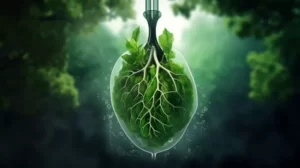The power of human touch has played a significant role in the history of healing. It’s well-known that therapeutic touch is effective for a range of conditions, from the religious ceremonial laying on of hands to faith healing, massage, acupressure, chiropractic, energy healing systems like qigong and Reiki, and many more. However, despite the historical importance of touch, many people underestimate its power, especially when it comes to pain relief.
The Science of Touch
The sensation of touch occurs when we brush against or bump into something and can be either pleasant or painful. Our skin, particularly the cells within it called Merkel cells, actively convey these sensations to the central nervous system, allowing us as humans to equate it with something from a previous experience. Recent studies have proven that Merkel cells actively encode basic information about pressure exerted when we touch something. They also amplify and enhance subtler sensations, such as the texture of an object beneath our fingertips.
Modern technology has enabled the scientific community to better understand the workings of touch at a cellular level. These discoveries will likely lead to new therapies and treatments for those who struggle with pain from touch or who cannot feel touch at all.
Touch and Pain Relief
One of the central benefits of touch is its ability to alleviate pain, particularly for those struggling with chronic conditions like fibromyalgia or postural orthostatic tachycardia syndrome (POTS). For individuals with these conditions, even the lightest touch can be a source of intense pain, making daily life incredibly difficult.
The recent discoveries into the function of Merkel cells and their amplification of sensations are helping scientists explore ways in which various pressures, motions, and touch can influence the body and its experience of pain. Researchers seek to discover methods for correcting dysfunction and improving the quality of life for those who cannot feel touch or who experience pain when touched.
The Importance of Touch in Human Connection
Touch is not only essential in a physical and pain relief sense, but it’s also critical for overall human connection and emotional well-being. This is best demonstrated in the phenomenon of “skin hunger,” where individuals crave human touch as a form of comfort and connection. Touch can have a profound effect on mood and emotional well-being, as well as on physical health.
For instance, studies have found that babies who receive regular touch and physical affection from caregivers grow up healthier and happier than those who do not. Touch has been shown to strengthen the bond between parent and child and even to relieve symptoms of anxiety and depression.
The Future of Touch-Based Therapies
As science continues to discover more about the power of touch and its potential applications for health and well-being, it’s likely that touch-based therapies will gain further traction in mainstream medicine. This could lead to newfound recognition of the value of touch-based practices, such as massage and chiropractic care, as valid treatment options, not just fringe alternatives.
Touch-based therapies may become integrated into standard medical treatments, potentially enhancing their effectiveness. In the long run, this could contribute to a more holistic approach to healthcare, addressing not only physical symptoms but also emotional and psychological well-being.
Embracing the Power of Touch
The recent scientific advances into the power of touch should give us all reason to appreciate and embrace touch as a critical component of our overall health and well-being. Whether through professional touch-based therapies or simply sharing comforting touch with loved ones, the power of touch can have a profoundly positive impact on our lives.
As scientific understanding of the power of touch continues to grow, it’s essential to remember the ancient wisdom of many cultures across the globe, which recognized human touch’s inherent healing power. By incorporating touch more consciously into our lives, we can enjoy its numerous benefits and rediscover a more holistic approach to health and well-being.



